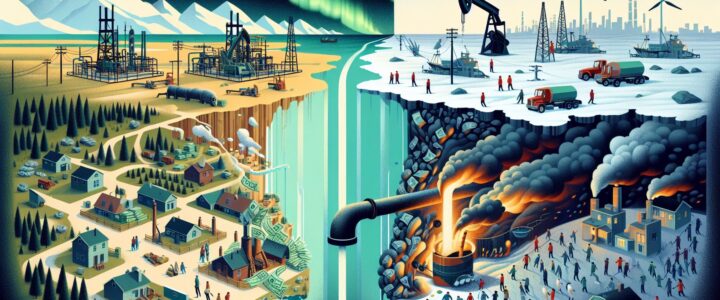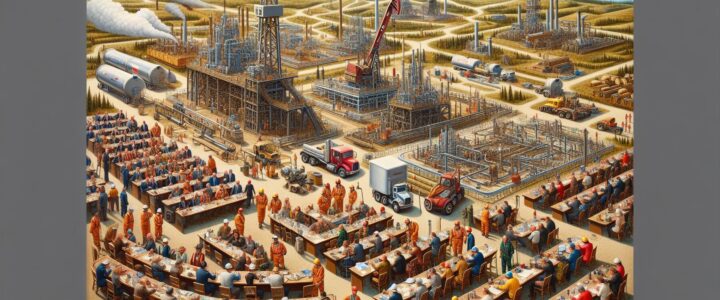The oil and gas industry in Canada has long been a key player in the country’s economy. With vast reserves of natural resources, including oil sands, conventional oil, and natural gas, Canada has established itself as a major global energy producer. However, this thriving industry is not without its share of challenges and controversies. In this article, we explore the opportunities and hurdles faced by the oil and gas sector in Canada.
Abundance of Natural Resources
Canada is blessed with an abundance of natural resources, particularly in the Western provinces of Alberta, British Columbia, and Saskatchewan. The oil sands in Alberta, also known as tar sands, are one of the largest oil reserves in the world. These reserves contain a thick, heavy form of crude oil, requiring complex extraction methods. Oil sands production has significantly contributed to the overall growth of the Canadian energy industry.
Additionally, Canada boasts vast conventional oil and natural gas reserves. The Atlantic offshore, as well as the Arctic regions, hold immense potential for future energy exploration and development. The availability of these resources has positioned Canada as a key energy supplier globally, particularly to its neighbor, the United States.
Economic Significance
The oil and gas industry plays a vital role in Canada’s economy, contributing significantly to the country’s GDP. It generates employment opportunities for thousands of Canadians, both directly and indirectly. The sector supports various industries, including engineering, manufacturing, and transportation. Moreover, it attracts foreign investments, further boosting economic growth. The revenue generated from oil and gas activities also helps fund social welfare programs, infrastructure development, and education initiatives across the nation.
Environmental Concerns
While the oil and gas industry undoubtedly brings economic benefits, it also raises profound environmental concerns. The extraction, production, and consumption of fossil fuels contribute to greenhouse gas emissions and climate change. The extraction of oil sands, in particular, involves intensive water usage and causes extensive land disturbance. These activities have attracted criticism from environmental groups and concerned citizens, both within Canada and internationally.
Furthermore, oil transportation via pipelines has been a contentious issue. Proposed pipeline projects, such as the Trans Mountain Expansion and Keystone XL, have faced protests due to worries over potential oil spills and their impact on the environment. Balancing economic interests with environmental sustainability remains a significant challenge for the Canadian oil and gas industry.
Technological Innovations
To address environmental concerns and improve operational efficiency, the Canadian oil and gas sector has embraced technological innovations. Advanced drilling techniques, such as horizontal drilling and hydraulic fracturing, have revolutionized the industry by unlocking previously inaccessible reserves. These advancements have led to increased production rates and minimized environmental footprints.
Moreover, the industry has taken steps to reduce greenhouse gas emissions. Canadian companies have invested in carbon capture and storage (CCS) technologies, aiming to capture and sequester carbon dioxide emissions from oil and gas operations. Such initiatives demonstrate the sector’s commitment to sustainable practices and reducing its environmental impact.
Conclusion
The oil and gas industry in Canada presents both opportunities and challenges. The abundance of natural resources, economic significance, and technological innovations highlight the industry’s potential for growth and development. However, environmental concerns and the necessity to transition toward more sustainable energy sources remain significant hurdles.
It is essential to strike a balance between economic prosperity and environmental stewardship, ensuring a sustainable future for Canada’s energy industry. Continued investments in technology, research, and clean energy initiatives will play a crucial role in shaping the future of the oil and gas sector in Canada. By addressing challenges proactively, the industry can contribute to national growth while mitigating its environmental impact.



